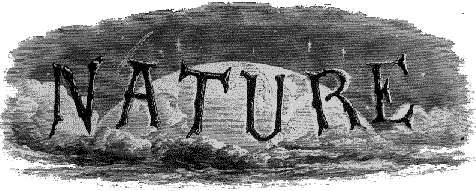A big Nature study on a tiny dinosaur is being retracted (original) (raw)

A paper on a pocket-sized winged “dinosaur” is being retracted after new unpublished findings cast doubt on the authors’ characterizations of their discovery.
The study, “Hummingbird-sized dinosaur from the Cretaceous period of Myanmar,” was published in Nature on March 11, 2020. Many news outlets, including the New York Times, Newsweek and National Geographic, picked up on the findings.
Then on March 18, Zhiheng Li of the Chinese Academy of Sciences, along with co-authors, posted a comment on bioRxiv about the study, casting doubt on whether the amber-encased specimen was in fact a dinosaur or avian species.
Nature updated the study with an expression of concern on May 29, which said:
Readers are alerted that doubts have been expressed about the phylogenetic placement of the fossil described in this paper. We are investigating and appropriate editorial action will be taken once this matter is resolved.
The study’s corresponding author, Jingmai O’Connor, also of the Chinese Academy of Sciences, posted a reply to Li’s comment with her collaborators on June 14. It said that there wasn’t adequate evidence for Li’s claim that the fossil was a type of lizard.
The study is being retracted today. The retraction notice reads:
We, the authors, are retracting this Article to prevent inaccurate information from remaining in the literature. Although the description of Oculudentavis khaungraae remains accurate, a new unpublished specimen casts doubts upon our hypothesis regarding the phylogenetic position of HPG-15-3.
This is one of two articles being retracted from Nature today. The other, “Exploring the quantum speed limit with computer games,” was published in 2016 and claimed to show that optimization problem games played by human participants could outperform the “most prominent established numerical methods.” Other readers, however, discovered “an error in our computer code that means the quantitative results reported are not valid,” according to the retraction notice.
Lead author doesn’t agree with retraction
O’Connor, who has made other recent high-profile discoveries and contributed to 16 publications in 2019, according to her personal biography, wrote to Retraction Watch:
I don’t agree with the retraction but there is no point in fighting it, so we all signed it.
I cannot say why Nature chose to retract, I cannot hypothesize on their inner machinations. I am fairly certain we were wrong in our identification but as we have demonstrated in a Matter’s Arising reply…the specimen cannot be unequivocally identified as either a bird or a squamate without more material (which has come to light but is as yet unpublished and effectively does not exist to science yet).
The author went on:
It is also not that unusual for paleontologists to misidentify things and for new information to correct previous hypotheses. However, Nature chose not to publish the Matter’s Arising and instead retracts our paper – they must have their reasons. It’s unfortunate because this way science can’t simply correct itself (as it is supposed to do) and on top of that, according to the [International Code of Zoological Nomenclature] ICZN the nomenclatural acts are valid whether retracted or not creating a complex grey area. The paper is retracted, yet will continue to be cited. So science will correct itself and cite the paper even though it is retracted making the retraction pointless.
Magda Skipper, the editor in chief of Nature, told Retraction Watch through a spokesperson:
We are committed to maintaining the integrity of the scientific record and carefully investigate all concerns that are raised with us in conjunction with the authors and independent reviewers as appropriate. These two retractions [the dinosaur paper and the computing article retracted the same day] reflect the scientific process in action: a process of constant appraisal by the scientific community which can incorporate the latest evidence as it becomes available.
O’Connor determined the classification of the bird-like creature, according to the work’s contributions section. She was also quoted in a New York Times article published the same day as the study, which explained that some researchers were choosing to boycott amber fossils — such as the one described in the Nature paper — from Myanmar due to the country’s genocide of the Rohingya Muslim minority. O’Connor opposed the boycott.
O’Connor added in a follow up email:
I agree we were wrong and an unpublished specimen will eventually prove it, but I disagree that a retraction was the best way to handle the situation.
Like Retraction Watch? You can make a tax-deductible contribution to support our work, follow us on Twitter, like us on Facebook, add us to your RSS reader, or subscribe to our daily digest. If you find a retraction that’s not in our database, you can let us know here. For comments or feedback, email us at [email protected].